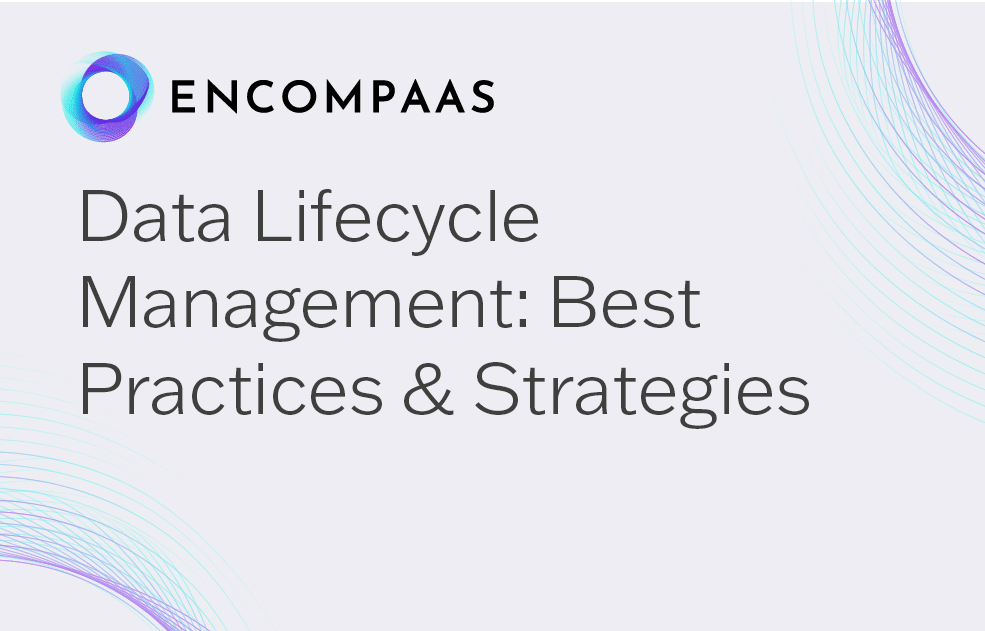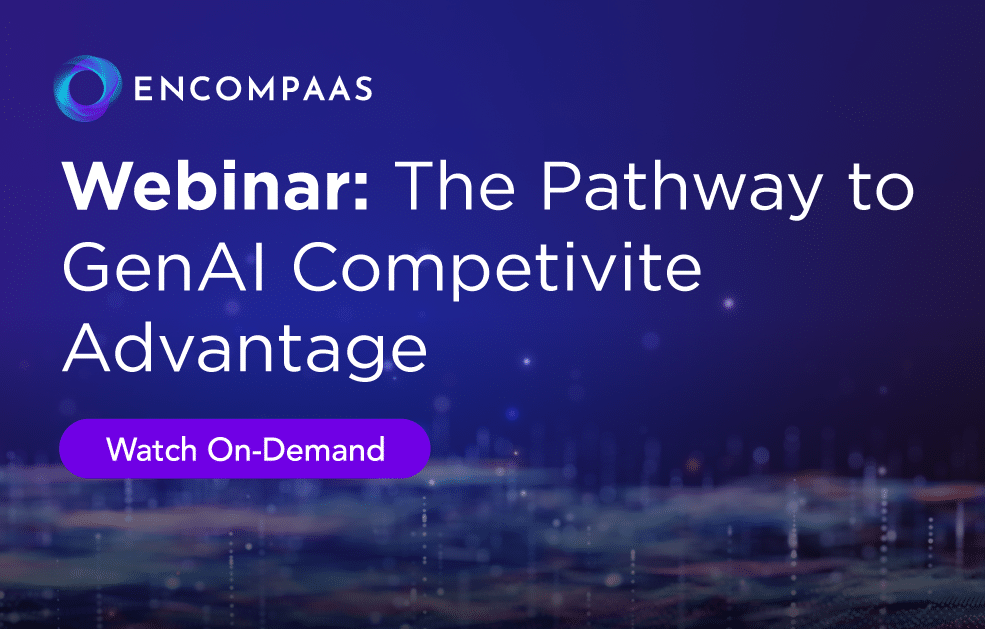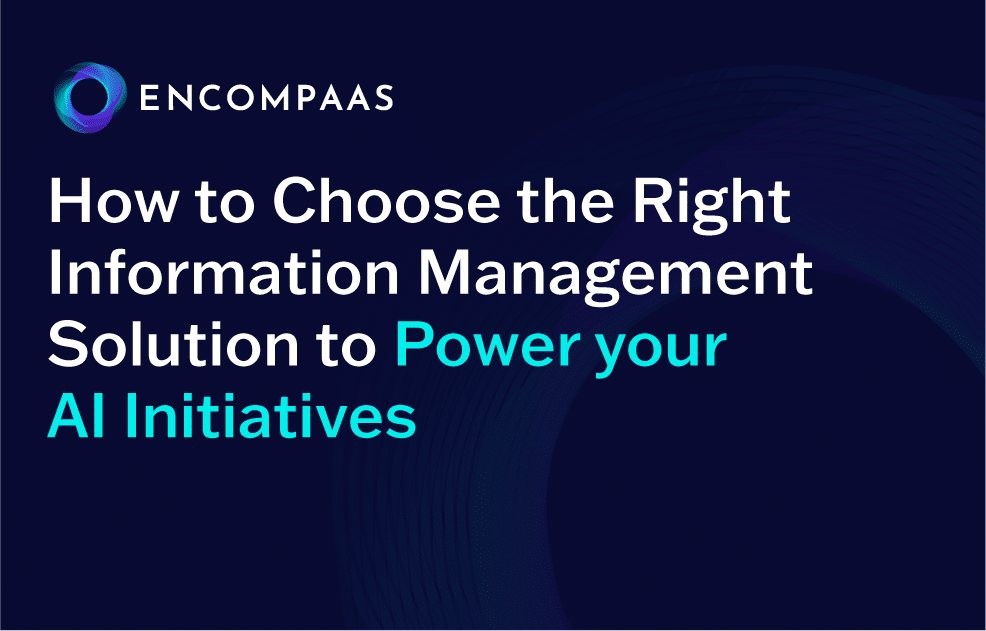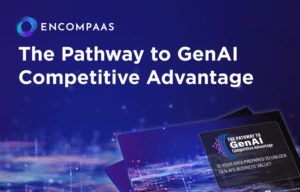Data Lifecycle Management: Best Practices and Strategies
Authored by EncompaaS - May 8, 2023
Share

In today’s data-driven world, organizations generate and store massive amounts of information. However, simply collecting data isn’t enough. To truly unlock its value and minimize potential risks, businesses need a robust data lifecycle management (DLM) strategy.
This blog explores the best practices and strategies for data lifecycle management, overseeing data’s journey from its creation to its eventual disposal. By the end, you’ll have a comprehensive understanding of enhancing data accessibility, security, and compliance throughout its lifecycle.
Main takeaways from this article:
- Data lifecycle management involves systematic oversight of data from creation to disposal, ensuring confidentiality, integrity, and availability. It’s essential for reducing risks, managing costs, enhancing compliance, and improving data accessibility.
- DLM focuses specifically on structured data, such as financial transactions, whereas ILM handles both structured and unstructured data, like documents and emails.
- The primary goals of data lifecycle management include safeguarding sensitive data, maintaining data accuracy, and ensuring availability. Best practices involve high-quality data creation, efficient storage and maintenance, responsible usage and sharing, secure archiving, and compliant data deletion.
- A robust DLM strategy aligns with business objectives and compliance requirements, incorporates strong governance frameworks, prioritizes data security, and includes a proactive approach to disaster recovery and business continuity.
- EncompaaS enhances DLM with AI and advanced tools for smarter data management, improving governance, compliance, and operational efficiency. This underscores the need for an integrated approach to managing data across its entire lifecycle.
What is data lifecycle management (DLM)?
Data lifecycle management (DLM) is the systematic process of overseeing data from its creation or acquisition to its final disposition.
DLM uses a combination of well-thought-out policies, advanced tools, and efficient processes. Together, they provide secure and practical data management throughout its lifespan. DLM keeps your data safe from risks, prevents any non-compliance, and maximizes its usefulness for your organization.
Data lifecycle management vs. information lifecycle management
Data lifecycle management and information lifecycle management (ILM) are often used interchangeably and for a good reason. Both disciplines share the goal of managing information assets effectively throughout their lifespan.
However, a closer look reveals a key distinction in their specific focuses.
- DLM: Data lifecycle management, as the name suggests, is laser-focused on managing structured data. This includes information like customer records, financial transactions, sensor data, and other digital assets with a defined structure.
- ILM: Information lifecycle management, on the other hand, takes a broader approach. It encompasses managing a wider range of information assets, including structured data and unstructured content like emails, documents, images, and videos.
Despite their differences, DLM and ILM overlap and work hand-in-hand. Structured data managed by DLM can often reside within documents or other information assets managed by ILM. For example, a customer record (DLM) might be part of a customer service email (ILM).
In these cases, a collaborative approach is essential. DLM and ILM strategies should be aligned to ensure consistent data management practices across different information types.
The main goal of data lifecycle management
DLM’s primary goal is to ensure three key aspects of data: confidentiality, integrity, and availability.
- Confidentiality: DLM safeguards sensitive information by controlling access through user permissions and data encryption.
- Integrity: DLM ensures data accuracy by implementing data validation and cleaning processes throughout the lifecycle.
- Availability: DLM guarantees that authorized users can access the data they need when they need it. Through proper storage and archiving practices, DLM prevents data loss and ensures its accessibility over time.
Effective DLM safeguards sensitive data from breaches maintains data reliability for accurate decision-making, and ensures data is accessible for critical operations.
Why is data lifecycle management important?
Effective DLM offers organizations a multitude of benefits. From mitigating risk and optimizing costs to enhancing compliance and promoting transparency, implementing a solid DLM strategy is crucial for success in today’s data-driven environment.
Here are some key reasons why DLM is important:
- Mitigates risk: DLM safeguards against data breaches and unauthorized access, minimizing the risk of financial losses and reputational damage.
- Reduces costs: Streamlining data management through DLM helps eliminate the storage and maintenance of redundant or obsolete data, leading to cost reductions.
- Improves data accessibility: By organizing and classifying data effectively, DLM ensures authorized users can readily access the information they need for informed decision-making.
- Ensures compliance: DLM helps organizations adhere to legal and regulatory requirements governing data privacy and security, minimizing the risk of penalties and legal disputes.
- Enhances transparency: A well-defined DLM strategy fosters a culture of transparency regarding data practices, building trust with stakeholders and customers.
Stages of data lifecycle management
Data passes through various stages throughout its lifecycle. Let’s explore each one for effective management:
1. Data creation
The process of creating data is the first step in managing its lifecycle. High-quality data is key for future usage, and good security practices from the beginning keep it safe. Therefore, getting this first stage right is very important.
2. Data collection
Data collection is an important step in managing data. But it’s not just about storing every piece of data you create. Rather, it’s about smart collection – your team figuring out what data is most important for your work and how it should be collected.
The sources can range from survey documents and interview forms to emails and websites. While it might be tempting to collect all the data you can find, you should focus on the data that’s relevant to your work for better efficiency.
3. Data processing
Once we’ve gathered data, it’s time to process it. This involves:
- Tidying up data from its raw state to make it easier to use (some also refer to this as data cleaning or data remediation),
- Converting data into a format that’s easier to store efficiently
- Transforming data into a coded form to keep it private and secure
Even simple tasks like transferring a paper form into a digital one can be considered data processing.
4. Data storage and maintenance
Storing data involves placing it in reliable areas like data lakes or warehouses. These facilities offer scalability, enabling organizations to grow without data constraints.
Proper maintenance keeps your data accurate and secure. This process might involve frequent checks, updates, or cleaning routines. By doing these, you ensure your data is safe from unauthorized access and stays uncorrupted.
5. Data usage and sharing
Data is valuable because it can generate insights and drive informed decisions. Therefore, responsible data usage and sharing are crucial.
Establish clear user access controls to ensure only authorized individuals can access specific databases. This minimizes the risk of unauthorized use or misuse.
Develop clear policies for data sharing and analysis. These policies should address privacy concerns and ensure data is used for its intended purposes.
6. Data archival
Not all data needs to be readily accessible. Some data may be required for legal or regulatory compliance purposes, historical analysis, or future reference.
Here’s how to ensure proper archiving:
- Define retention periods: Develop a data retention schedule that complies with legal and regulatory requirements while minimizing the storage of obsolete data. Retention periods will vary depending on the type of data and its purpose.
- Choose secure archival methods: Utilize secure and reliable archiving solutions that guarantee data integrity and accessibility when needed. This could involve offline storage options like magnetic tapes or secure cloud-based archives.
7. Data deletion
The final stage involves disposing of data that is no longer required. Responsible data deletion is crucial to prevent security breaches and ensure compliance with privacy regulations.
Implement secure data deletion procedures that permanently erase data once its retention period has expired.
Common methods include:
- Overwriting data with random characters
- Using specialized data deletion software
Ensure these processes adhere to data privacy regulations like GDPR or CCPA, which often mandate specific procedures for data disposal to safeguard individual privacy rights.
Best practices for an effective DLM strategy
A well-defined DLM strategy forms the backbone of effective data governance. Here, we explore some key best practices to ensure your DLM strategy delivers optimal results.
1. Ensure high data quality across all phases
Data quality is paramount. Errors and inconsistencies in your data can lead to poor decision-making, wasted resources, and reputational risk. Here’s how to maintain high data quality:
- Integrate data validation checks at the point of data creation to identify and rectify errors. Regular data cleaning routines can further eliminate inconsistencies and improve data accuracy.
- Don’t just collect data; enrich it by adding additional information. This could involve merging data from different sources or appending context-rich details to enhance the stored data.
2. Establish robust data governance frameworks
A strong data governance framework provides the structure and oversight needed to manage data policies, standards, and practices effectively. It ensures everyone within the organization understands their roles and responsibilities regarding data management.
Create effective data governance frameworks to facilitate compliance with regulations, manage data access controls, and ensure consistent data management practices across the organization. This will build a culture of data accountability and reduce the risk of human error.
3. Align DLM practices with business and compliance goals
Don’t let DLM become an isolated function. Align your DLM strategy with your organization’s overall business objectives and regulatory requirements. To do this, understand your data usage patterns and how data can be leveraged to achieve specific business goals.
Align your DLM strategy with these goals by defining data retention periods and access controls based on business needs. Stay updated with relevant data privacy regulations like GDPR or CCPA to ensure your DLM practices adhere to these regulations.
4. Adopt comprehensive data security and compliance measures
Data security and compliance are critical aspects of any DLM strategy. To safeguard your data, you must:
- Implement end-to-end data encryption to protect data at rest and in transit.
- Enforce access controls based on the principle of least privilege, granting users access only to the data they need for their job functions.
- Conduct regular security audits to identify and address vulnerabilities in your data management systems.
- Develop a data breach response plan to outline steps for mitigating the impact of a data security incident.
5. Prepare for recovery and continuity
Even with the best safeguards, unforeseen events can occur. Having a robust disaster recovery and business continuity plan in place is crucial to:
- Create data backups and tackle disaster recovery: Establish regular data backup routines and implement disaster recovery procedures to ensure data availability and minimize downtime in case of disruptions.
- Ensure business continuity planning: Develop a business continuity plan outlining how critical business functions will be maintained during and after an incident, ensuring minimal disruption to operations.
- Regularly test your recovery and continuity plans: Simply creating these plans will not serve your purpose. You must regularly test and ensure they are effective and up-to-date.
By implementing these best practices, organizations can create a comprehensive and effective DLM strategy. This, in turn, lays the foundation for maximizing data value, ensuring compliance, and achieving business objectives in today’s data-driven world.
Optimize your organization’s data lifecycle with EncompaaS
With a well-defined DLM strategy in place, organizations can ensure the security, integrity, and accessibility of their data, fostering operational efficiency, compliance adherence, and informed decision-making. However, managing data across its entire lifecycle can be a complex undertaking.
This is where EncompaaS steps in as your strategic partner.
EncompaaS offers a comprehensive platform that allows you to seamlessly integrate DLM best practices with the power of Artificial Intelligence (AI) and advanced platform capabilities. It empowers you to:
- Effortlessly implement DLM best practices: EncompaaS streamlines data management tasks, making it easier to enforce data quality standards, establish robust governance frameworks, and align DLM practices with your business goals.
- Leverage AI for smarter data management: EncompaaS leverages AI-powered tools to automate data validation, cleaning, and enrichment processes, freeing up valuable resources and improving data accuracy.
- Enhance data governance and compliance: EncompaaS provides the tools and insights needed to establish robust data governance frameworks, ensure compliance with data privacy regulations, and promote a culture of data accountability within your organization.
It’s important to remember that EncompaaS complements, not replaces, a comprehensive data security strategy. To safeguard your data, you should continue implementing robust security protocols like end-to-end encryption and access controls.
Intrigued and want to experience the power of EncompaaS first-hand?
Book a demo today and discover how our platform can help you optimize your data management strategies and ensure the long-term resilience of your valuable data assets.
Book a demo
Let's get started
Experience the Power of EncompaaS!
Submit this form to see EncompaaS in action with a demo from our information management experts.
Related Resources

- Webinar

- Blog


